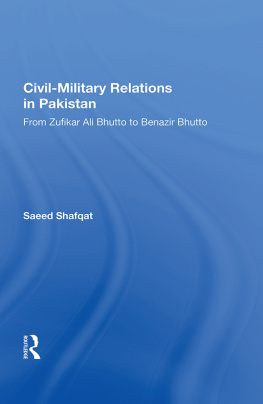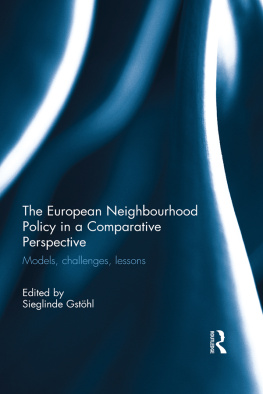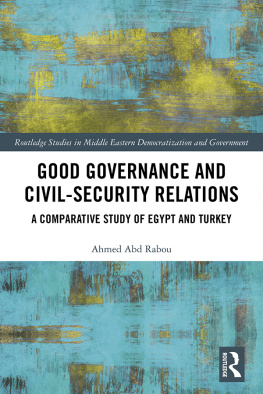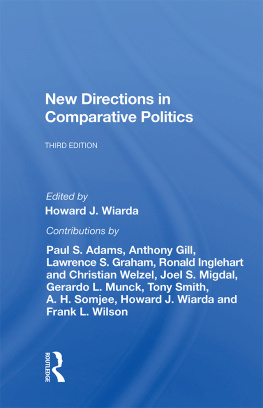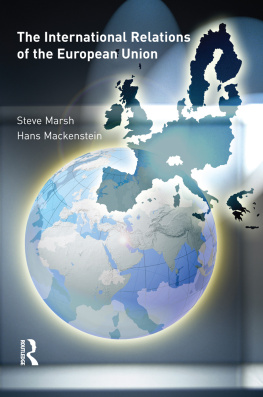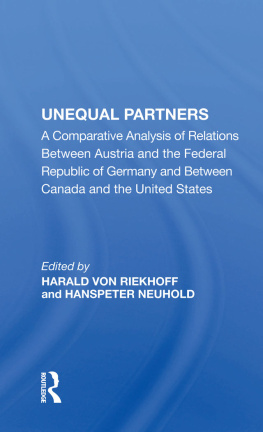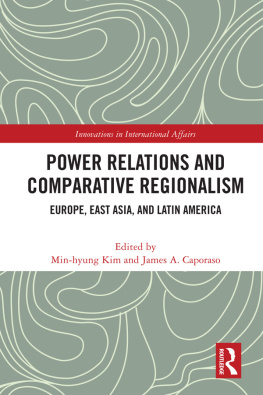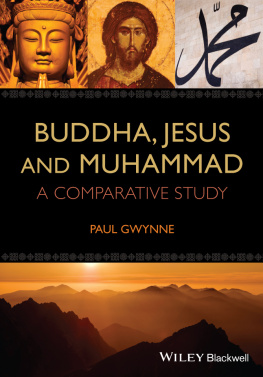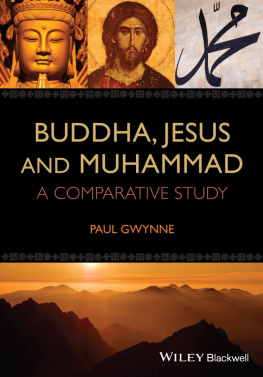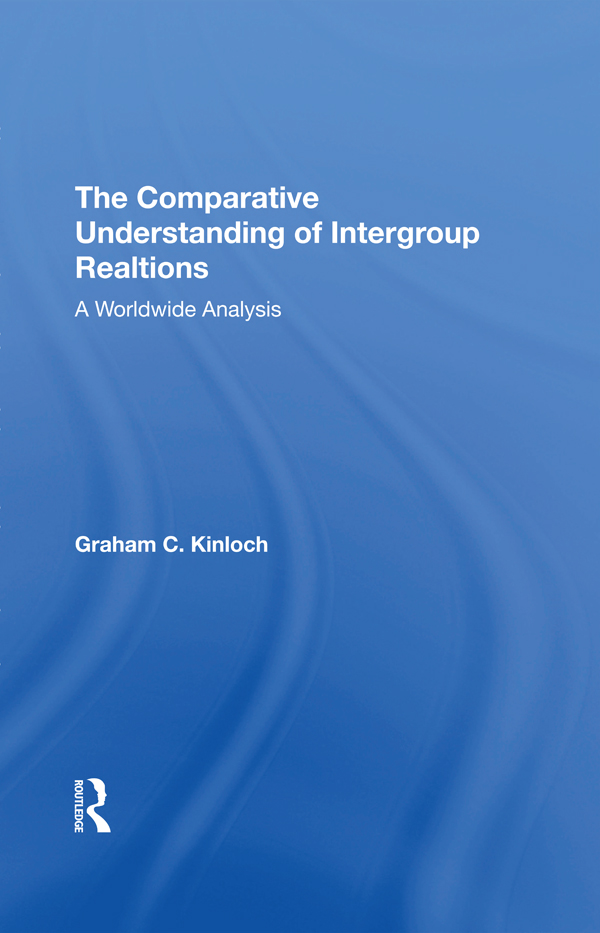First published 1999 by Westview Press
Published 2019 by Routledge
52 Vanderbilt Avenue, New York, NY 10017
2 Park Square, Milton Park, Abingdon, Oxon OX14 4RN
Routledge is an imprint of the Taylor & Francis Group, an informa business
Copyright 1999 Taylor & Francis
All rights reserved. No part of this book may be reprinted or reproduced or utilised in any form or by any electronic, mechanical, or other means, now known or hereafter invented, including photocopying and recording, or in any information storage or retrieval system, without permission in writing from the publishers.
Notice:
Product or corporate names may be trademarks or registered trademarks, and are used only for identification and explanation without intent to infringe.
Library of Congress Cataloging-in-Publication Data
Kinloch, Graham Charles.
The comparative understanding of intergroup relations : a
worldwide analysis / Graham C. Kinloch.
p. cm.
Includes bibliographical references and index.
1. Intergroup relations. 2. Social psychology. I. Title.
HM131.K495 1999
99-11950
CIP
ISBN 13: 978-0-367-29098-6 (hbk)
The present work emerged out of my biographical experiences. I was born and spent my formative years in what was then Rhodesia, a typical colony, ruled by a tiny white elite who subjected the black majority to rigid racial segregation, exclusion, and control. I attended a high school reserved for white males where I experienced a typically British-type education with major examinations flown in from England. Education in such an environment, while thorough, was authoritarian, rigid, and largely based on rotelearning. This caste-based society appeared orderly and natural to those who most benefitted from it, with many whites fiercely resisting racial change as a result.
In 1960, my family moved to New Zealand where I completed my undergraduate training in a setting where whites were in the majority, but nevertheless failed to treat the indigenous population with much dignity. While this setting lacked extremes in terms of wealth and poverty, its general atmosphere was largely isolationist, static, and introverted. I became very critical of a country which appeared highly mediocre regarding political and economic efficiency.
I returned to Rhodesia immediately upon graduation in 1964, where I taught in a black high school and observed the beginnings of civil war. In response, the white elite resisted indigenous claims to independence and majority rule.
I began graduate school in the United States in 1965, completing my degrees in 1968. This society was experiencing the dynamics of student unrest, civil rights, and protests against the Vietnam War. I returned to Southern Africa for a short period, becoming gradually aware of the rising racial conflict around me. While sensitive to the negative effects of the most glaring kinds of white racism and discrimination, most whites largely continued to ignore the need for fundamental societal change to any significant degree.
In 1970, 1 moved to Honolulu where I taught race relations at the University of Hawaii. Moving from racist Southern Africa to a setting in which non-racist behavior was the overt norm made a profound impression on me: clearly, racism was entirely socially-created, the invention of particular societal contexts designed to legitimize the major kinds of inequality within them. While racism was not entirely absent in the Hawaiian situation, high levels of interracial tolerance and mixing were striking features of the social landscape. Overt expression of prejudice was neither encouraged nor accepted. I became fascinated by interracial attitudes, stereotyping, social distance, and the interpersonal dynamics of racially-mixed families as these phenomena related to the societys socioeconomic hierarchy. The contrast with the Southern African situation was overwhelming. I became increasingly interested in comparative group relations, culminating in my book, The Dynamics of Race Relations, A Sociological Analysis (1974), in which I developed a general colonial theory of race relations applied to individual, group, and societal levels of analysis. This was further elaborated in The Sociology of Minority Group Relations (1979), in which this approach was related to a broad range of minorities, including the physically, culturally, economically, and behaviorally-defined. My continuing interest in the Rhodesian situation also resulted in the publication of Racial Conflict in Rhodesia: A Socio-Historical Study (1978) which focused on changing white and African racial attitudes in this particular colonial society from the 1890s through the 1970s, based on a broad range of attitudinal and demographic data. This project made me particularly aware of the historical, cultural, national, demographic, occupational, and economic factors behind the dynamics of intergroup relations in this particular country.
Living in Florida, part of the American South, since 1971, I have also experienced colonial race relations in this setting for an extended period, struck by its similarities and limited differences relative to my previous experiences. The United States, while founded on the myth that it represents a liberal democracy, is a colonial situation, nevertheless, containing a fairly rigid racial hierarchy exploited by its W.A.S.P. elite. In this situation, I have continued to research changing race relations, the dynamic situation in Zimbabwe, and, more recently, intergroup conflict on a worldwide basis.
The present monograph represents an extension and elaboration of my earlier interest in the colonial process and its impact on the world as a whole. While my previous work focused on general models of colonialism and particular situations, this project sought to expand its scope to all major societies around the world and the United States in particular. The result is a study which focuses on the formative historical and ensuing circumstances behind major types of intergroup contact and consequent intergroup relations within approximately 170 countries and all states within the U.S., comparing the more conflict-prone to the more harmonious with respect to a broad range of related factors. My aim was to explicate some of the major factors behind intergroup relations as a whole relevant to contemporary social policies which attempt to address such matters. The approach of such a study is general and comparative rather than microscopic, detailed, and case-oriented. I am highly aware of the limitations of such an approach: the typologies which emerge are crude, lacking in detail, and are neither exhaustive nor exclusive. Clearly, any particular society or state might fit into a number or none of the categories so developed, while the general conclusions drawn from them may occasionally appear very limited. Obviously, the U.S. and international case studies could be elaborated in a great deal more detail. Nevertheless, given time and space constraints, the exercise reported in the chapters to follow appears useful to the extent it highlights a number of apparently crucial factors behind intergroup violence or relative harmony, raising associated policy implications for attempts at social amelioration either nationally or on a global scale. Particularly interesting, perhaps, is the general conclusion that intergroup contact conditions may override societal contexts, highlighting the possibility of effecting positive social change in even highly problematic types of settings.


